When it comes to medical treatment, understanding your rights and responsibilities is essential. A well-crafted consent letter helps ensure that you are fully informed about the procedures and risks involved, fostering trust between you and your healthcare provider. This important document not only clarifies what treatments you are agreeing to but also serves as a record of your medical decisions. Curious about how to create the perfect consent letter? Keep reading to explore our easy-to-follow template and tips!

Patient Information
Medical treatment consent forms are essential documents that outline the patient's details, medical history, and the procedures they are consenting to undergo. These forms typically include the patient's full name, date of birth, and contact information, ensuring accurate identification. Medical history sections require detailed information about pre-existing conditions, allergies, and current medications, allowing healthcare providers to tailor treatments appropriately. Informed consent also encompasses explanations of risks, benefits, and alternatives to treatments, ensuring that patients make educated decisions about their healthcare. Legal representatives or immediate family members may also need to provide consent for minors or incapacitated individuals, highlighting the importance of clear communication in the consent process.
Treatment Description
Medical treatment consent forms require clarity and detail regarding the specific procedures involved. Invasive procedures often entail the administration of anesthesia, potential surgical interventions, or the use of pharmaceuticals. Diagnostic tests such as MRI (Magnetic Resonance Imaging) or CT scans (Computed Tomography) may be discussed, emphasizing the importance of informing patients about the nature of these tests, their purpose, and possible side effects. Risks associated with treatments like chemotherapy for cancer (leading to side effects such as nausea or hair loss) or surgery (including infection and scarring) must be outlined thoroughly. Patients should also be informed about their rights to ask questions and withdraw consent before the initiation of any treatment, ensuring they feel empowered in their healthcare journey.
Risks and Benefits
Medical treatment consent involves understanding the complexities of healthcare procedures. When patients consider undergoing procedures, such as surgery, it is vital to evaluate benefits like improved health outcomes or increased quality of life. Simultaneously, awareness of risks, including potential complications like infection, bleeding, or adverse reactions to anesthesia, is crucial. Informed consent ensures patients, such as those undergoing elective surgeries at regional medical centers, make knowledgeable decisions regarding their treatment options. Proper documentation reinforces the necessity of transparency, emphasizing the healthcare team's commitment to patient safety and ethical standards in clinical practice.
Alternatives
Informed consent is a crucial aspect of medical treatment, ensuring that patients understand their options before proceeding with procedures. Patients must be aware of alternative treatments that may be available for their condition, such as physical therapy, medication management, or lifestyle changes. For example, conditions like chronic pain may present alternatives like acupuncture or chiropractic care, while mental health issues could benefit from therapy or support groups. Each alternative treatment's potential risks and benefits must be communicated effectively to empower the patient in making informed choices about their healthcare journey.
Signature and Date
Informed consent is a vital process in medical treatment, ensuring that patients fully understand their procedures, potential risks, and benefits before agreeing to treatment. For instance, elective surgeries such as knee arthroscopy require patients to acknowledge comprehension of risks like infection or blood clots. Key information includes the specific treatment details, possible alternatives, and the follow-up care required post-surgery. Documenting consent typically involves a signature from the patient, confirming their agreement, and a date to validate the timing of the consent, ensuring that the decision is made with adequate understanding prior to the medical intervention.

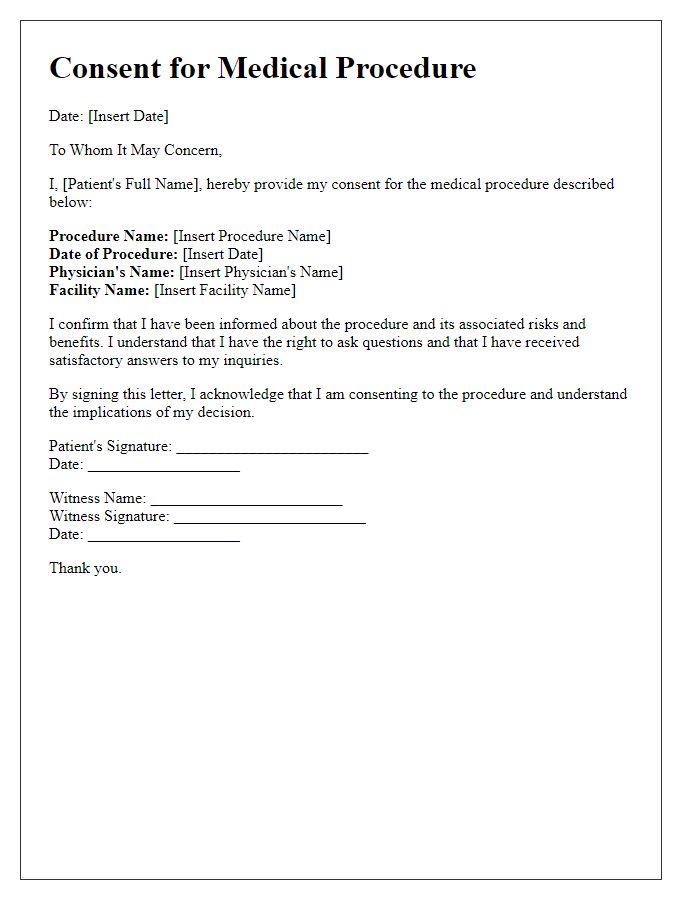
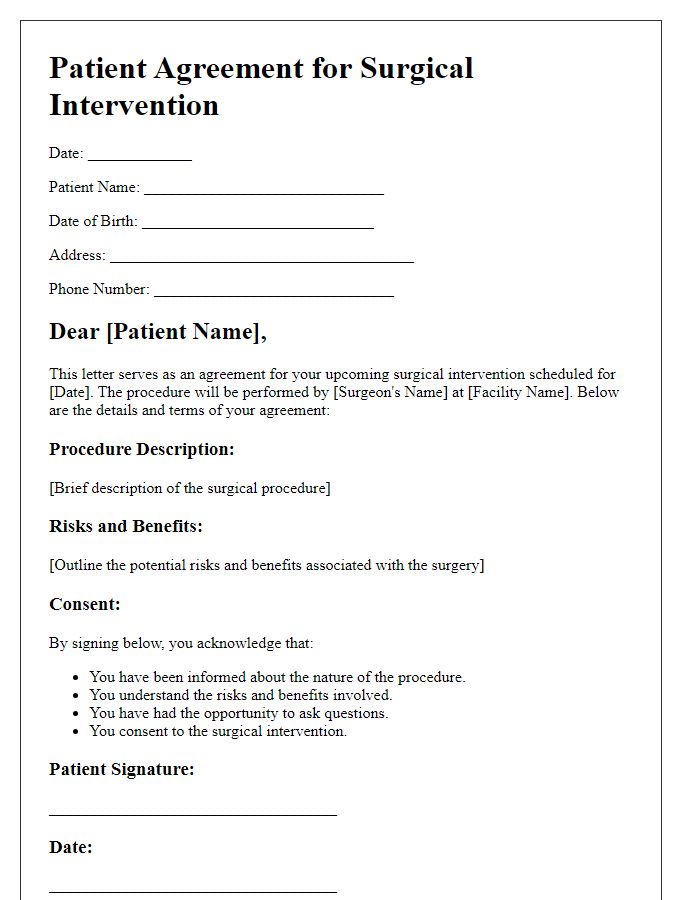
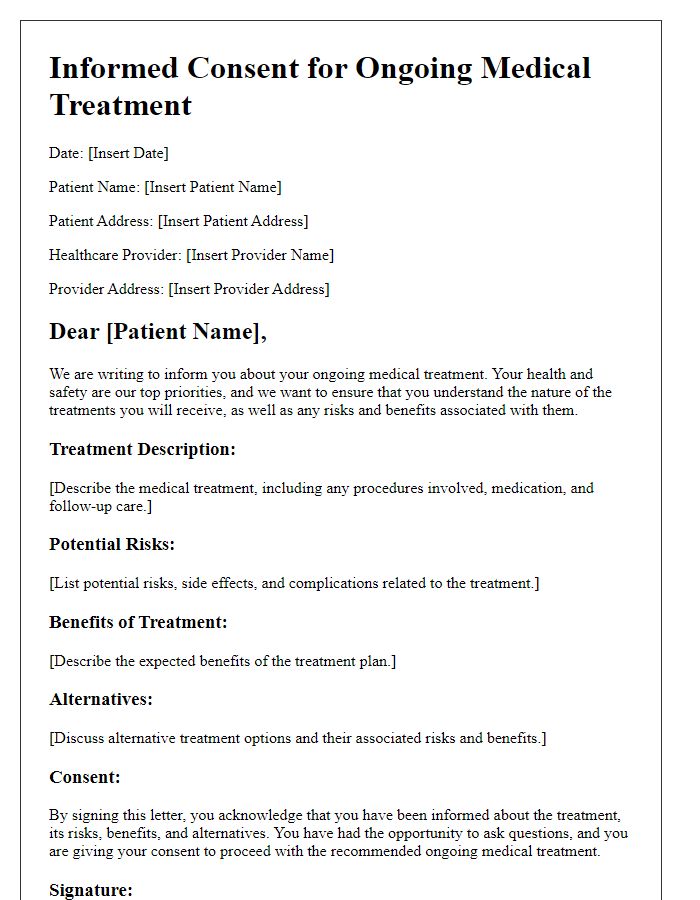
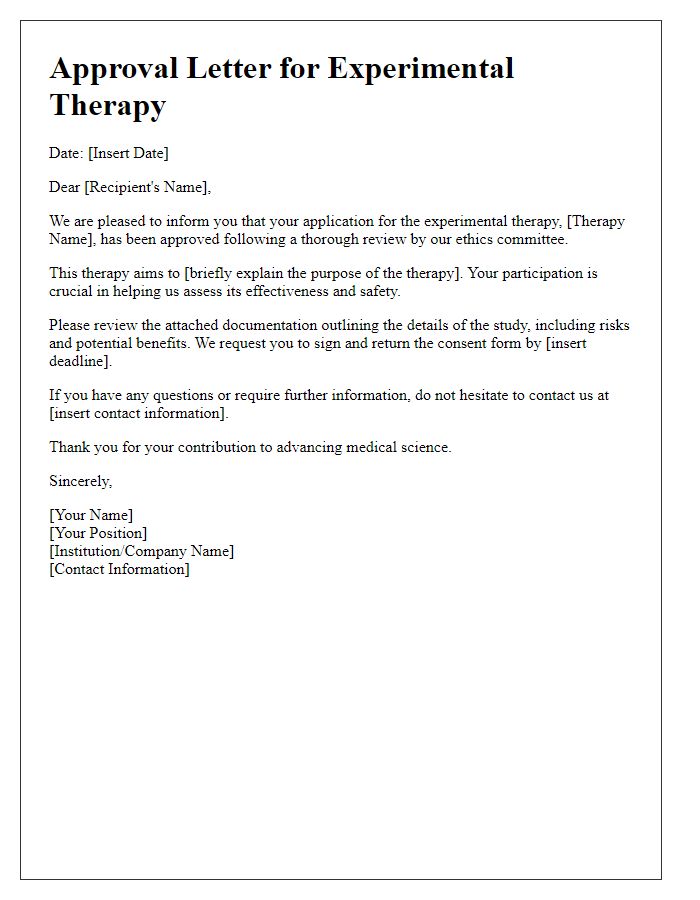
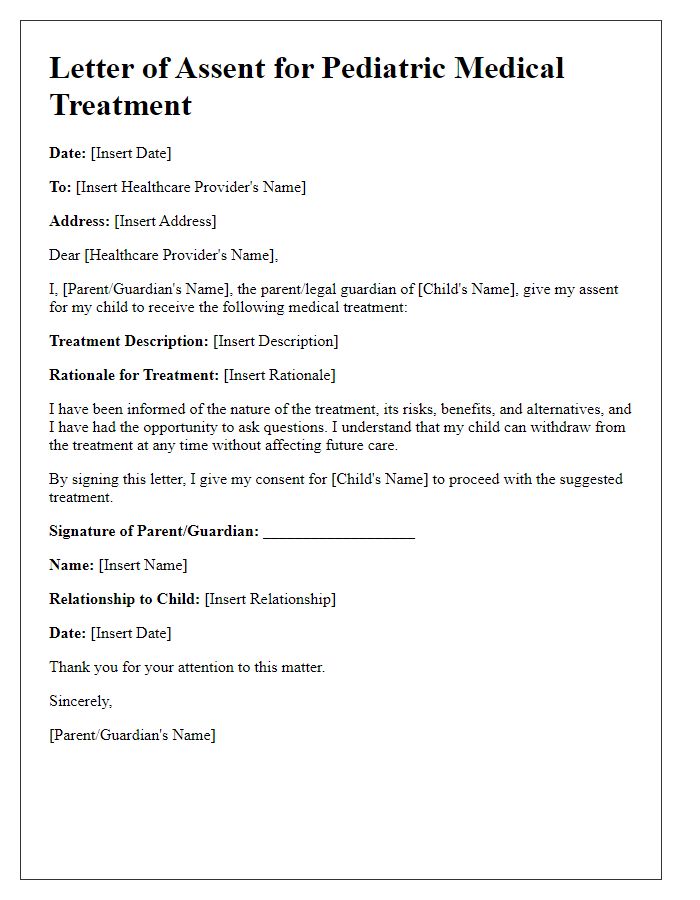
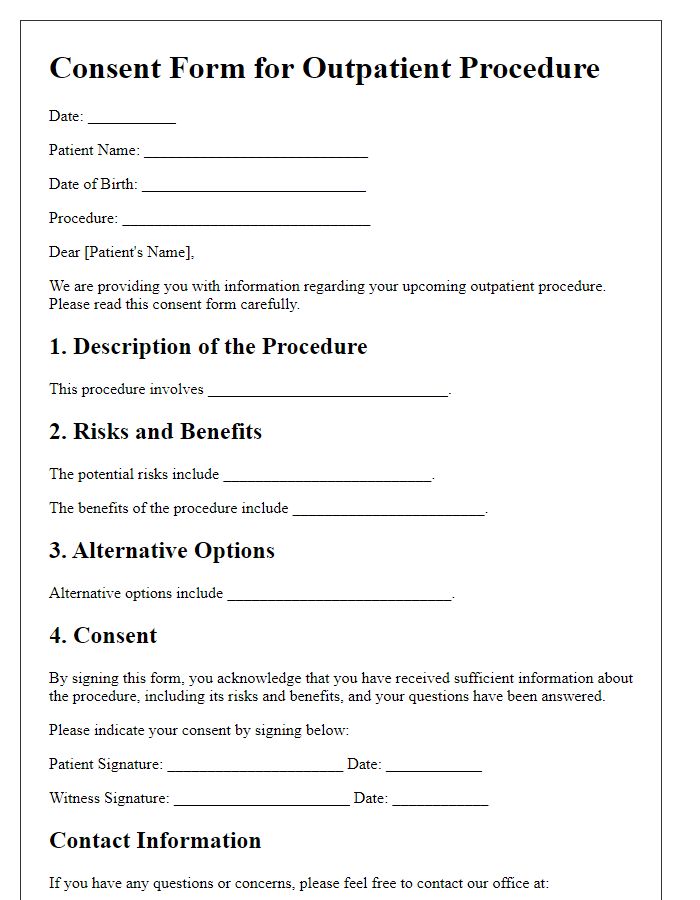
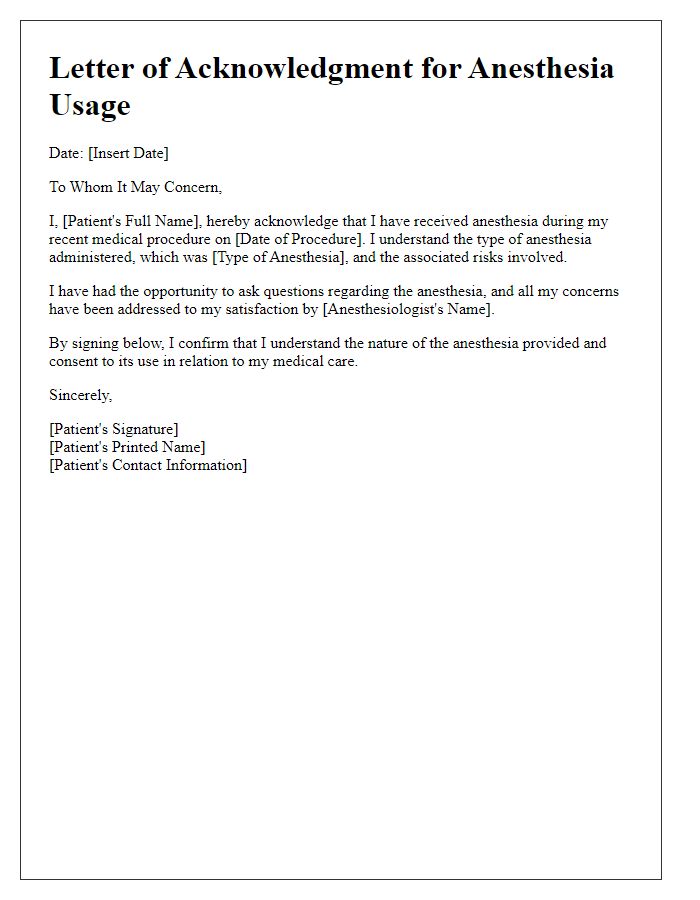
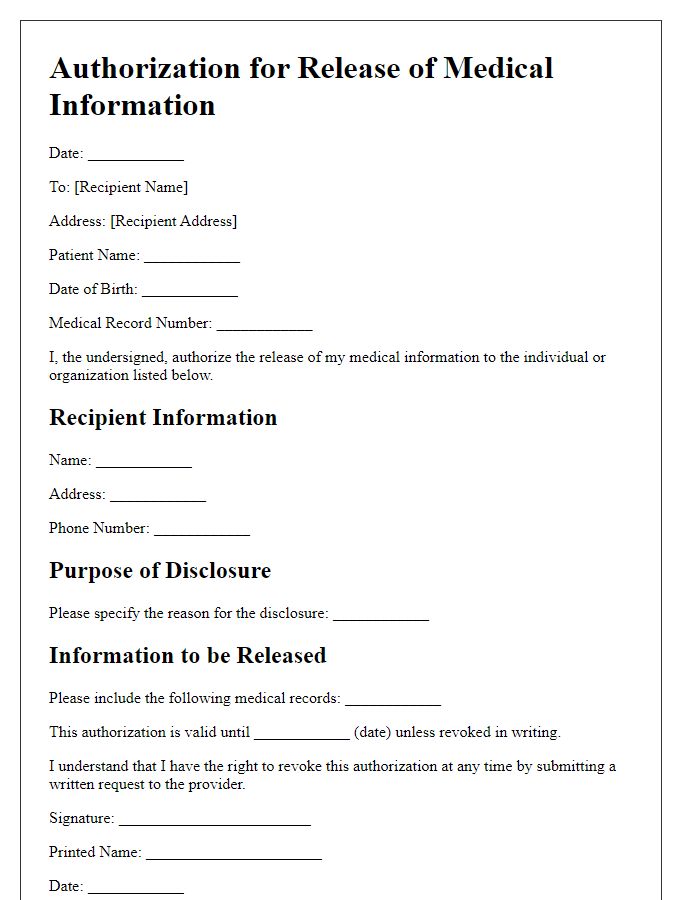
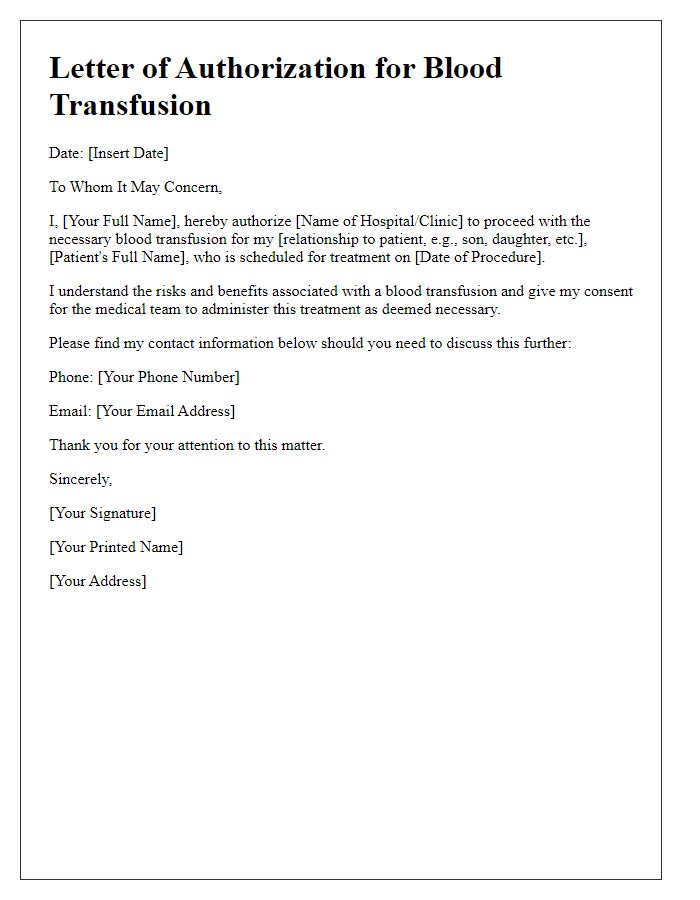
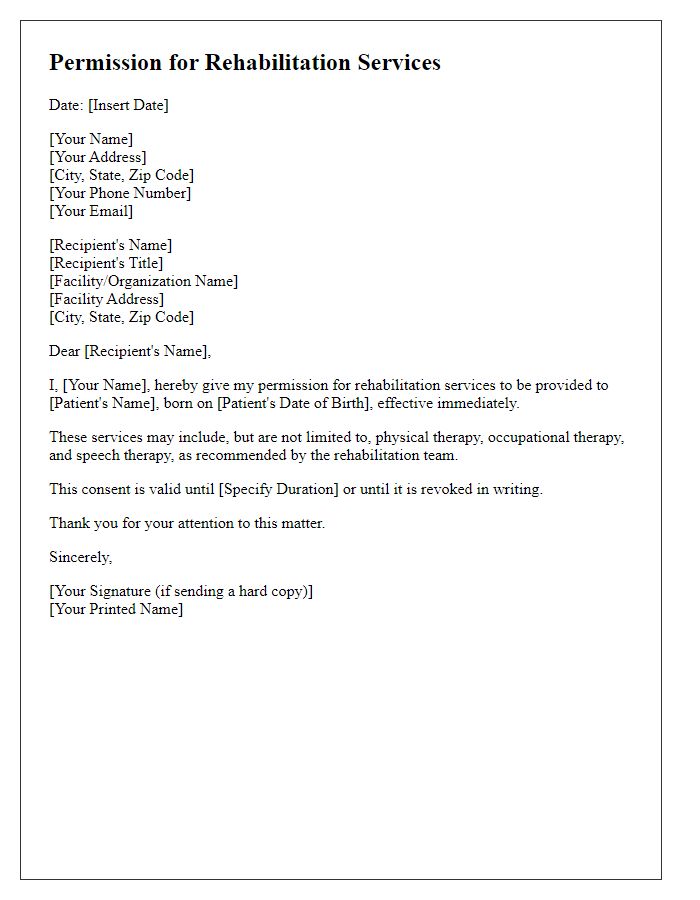


Comments